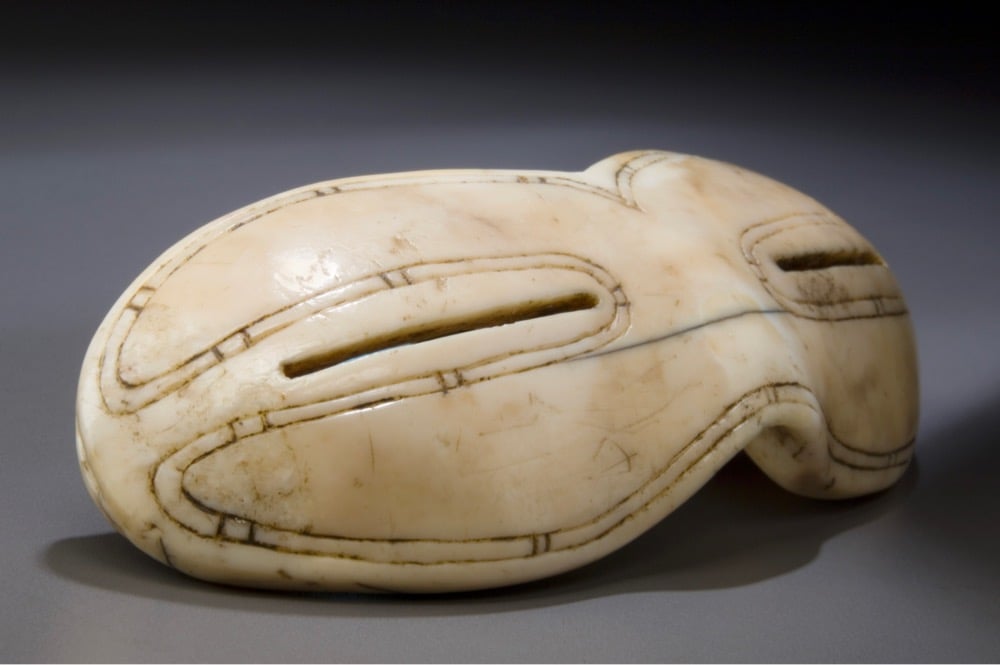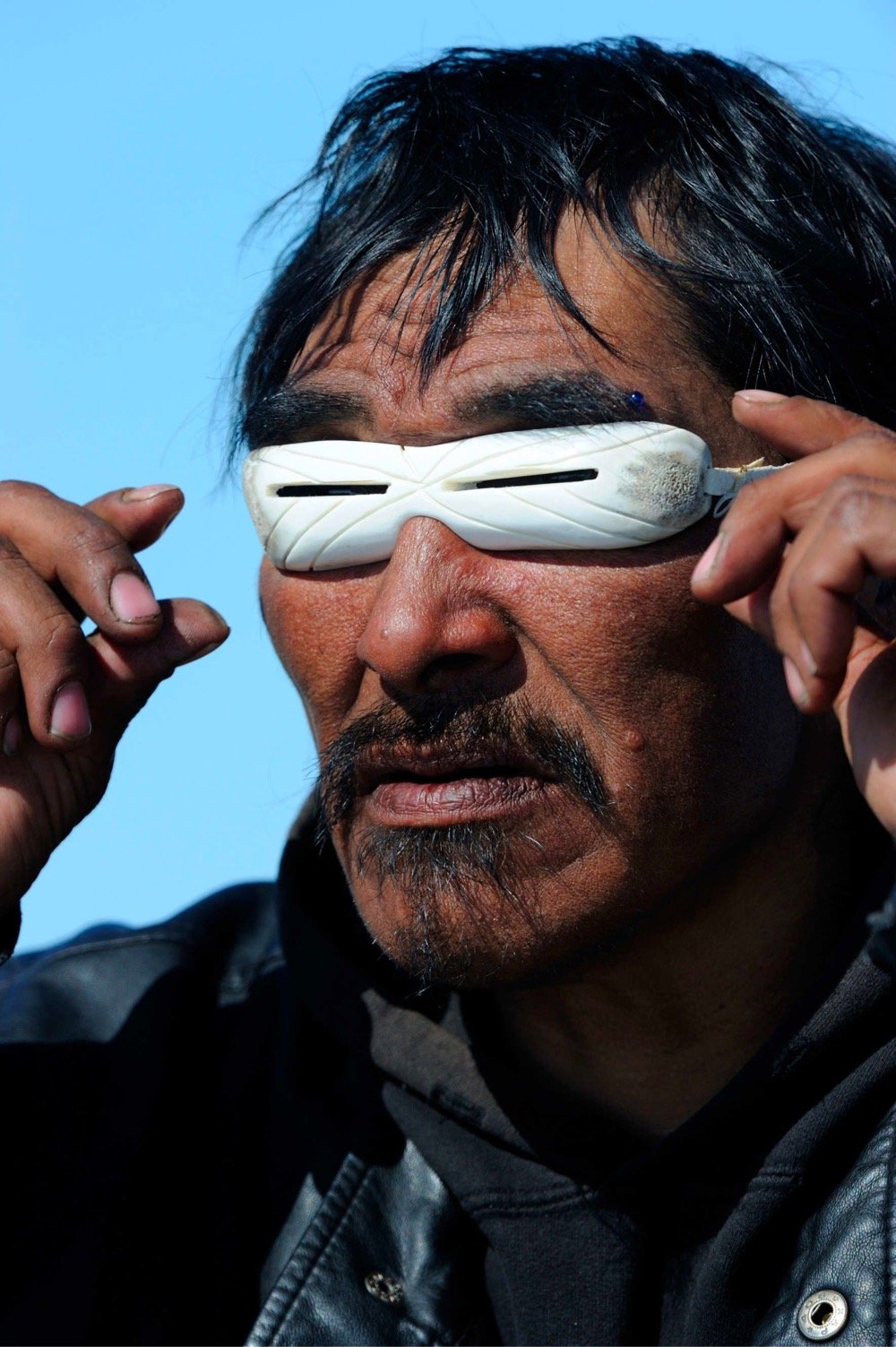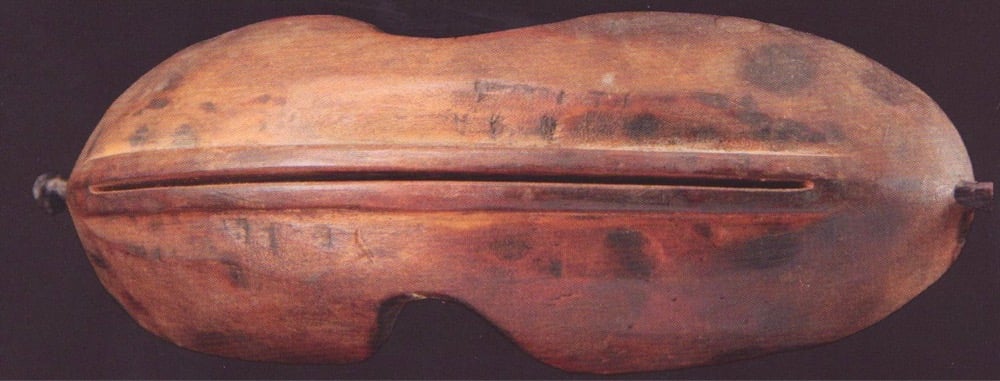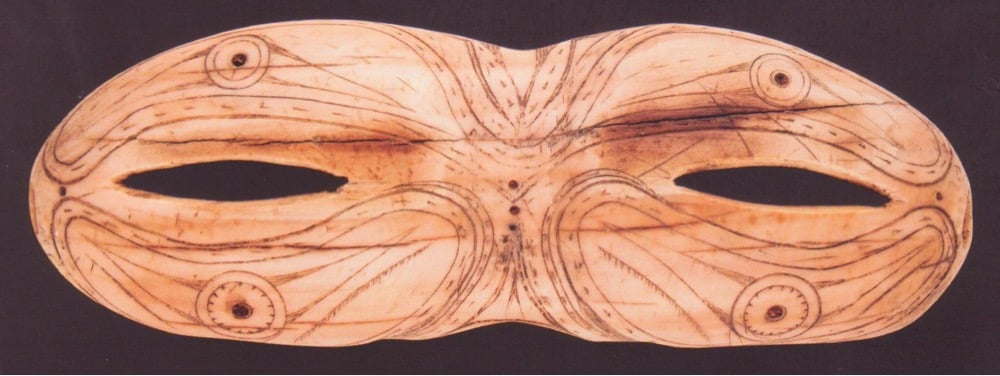Arctic Snow Goggles





For thousands of years, Yupik and Inuit people have made snow goggles from various materials (bone, wood, whale baleen) to help protect their eyes from the sun and, more importantly, from the sunlight reflected off the Arctic snow. The narrow slits also help with the wearers’ visual acuity. Clive Thompson explains in this piece for Smithsonian:
This style of eyewear can even improve vision, as Ann Fienup-Riordan discovered one day in 2010. An Anchorage-based anthropologist who works with the Yupik people to develop exhibits and books about their culture, she had recently undergone surgery on her retinas, and “the vision in my right eye was still pretty fuzzy,” she says. But when she held the Yupik goggles up to her eyes? “I could see!”
What was going on? It turns out the slit focuses the light, much as a pinhole camera does. As a result, far-off objects appear sharper “and your vision was much, much better,” Fienup-Riordan says. Long before the invention of eyeglasses with glass or plastic lenses, Alaska’s indigenous inhabitants, including the Yupik people, devised their own corrective eyewear. Phillip Moses, a tribal member in Toksook Bay, calls them “Yupik prescription sunglasses.”
Snow goggles were probably the first wearable corrective device to be invented.





Stay Connected